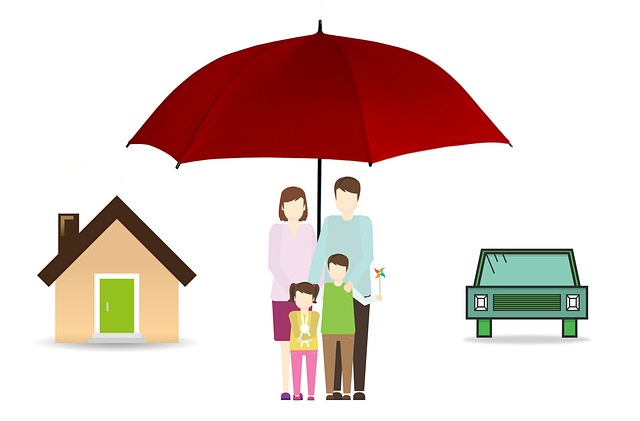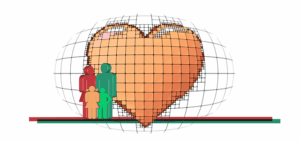Mastering Local Property Insurance: Expert Tips for Comprehensive Protection

Understanding local property insurance needs safeguards investments and offers peace of mind. Expert…….
In an era where unforeseen events can turn a person’s life upside down, property insurance stands as a beacon of protection, offering peace of mind and financial security. This far-reaching industry plays a pivotal role in safeguarding individuals’ most valuable assets—their homes and businesses. This article delves into the intricate world of property insurance, exploring its various facets, global impact, economic implications, technological innovations, regulatory frameworks, and future prospects. By the end, readers will gain a comprehensive understanding of this essential component of modern financial security.
Definition: Property insurance is a form of coverage that protects individuals and businesses from financial loss resulting from damage or theft of their physical assets, primarily real estate properties and personal belongings. It provides a safety net against unforeseen perils, ensuring that policyholders can rebuild, repair, or replace what they own without incurring substantial out-of-pocket expenses.
Core Components:
Building/Structure Coverage: Protects the physical structure of a property, including damage or destruction caused by fire, storms, vandalism, and other perils.
Contents/Personal Property Insurance: Covers personal belongings inside the insured property, such as furniture, electronics, clothing, and other items, against theft, damage, or loss.
Liability Protection: Shields policyholders from financial responsibility for injuries or damages caused to others on their insured premises. It covers medical expenses, legal fees, and potential judgments.
Additional Living Expenses (ALE): Provides temporary housing and living expenses if the insured property becomes uninhabitable due to a covered loss, ensuring policyholders can maintain their standard of living during repairs or rebuilding.
Historical Context: The roots of property insurance can be traced back to ancient civilizations, where mutual aid societies and community-based plans were established to share risks. However, the modern property insurance industry emerged in the 18th century with the rise of urban centers and increasing exposure to catastrophic events like fires and storms. Over time, it evolved to incorporate various perils, expand coverage options, and become a vital component of personal and business financial strategies.
Significance: Property insurance serves as a critical safety net, offering protection against substantial financial losses. It provides individuals and businesses with the means to recover from unforeseen events, ensuring they can rebuild their lives and operations. Moreover, it plays a significant role in economic stability by mitigating risks and fostering growth in real estate and business sectors.
Property insurance has transcended geographical boundaries, becoming a global industry with diverse regional dynamics. Its influence is evident across the globe, from developed economies to emerging markets, each facing unique challenges and embracing tailored solutions.
International Influence:
North America: The United States and Canada lead in property insurance innovation, featuring advanced risk assessment technologies and comprehensive coverage options.
Europe: European countries have robust property insurance markets, characterized by stringent regulatory frameworks and a focus on consumer protection.
Asia-Pacific: Rapid urbanization and increasing natural disasters drive demand for property insurance in countries like China, Japan, and Australia.
Emerging Markets: In regions like Latin America and Africa, property insurance adoption is gaining momentum, driven by growing awareness of its benefits and expanding financial inclusion initiatives.
Key Trends Shaping the Industry:
Digital Transformation: Adoption of digital technologies, such as smart home devices, AI-powered risk assessment tools, and online policy management platforms, enhances efficiency and customer experience.
Microinsurance: Targeting underserved populations with affordable, tailored coverage for smaller properties and assets becomes increasingly popular in developing regions.
Catastrophe Modeling: Advanced modeling techniques predict disaster risks more accurately, enabling insurers to offer more precise coverage and pricing.
Green Building Incentives: Growing environmental consciousness encourages the development of eco-friendly buildings, potentially leading to reduced insurance costs and incentives for policyholders.
The property insurance market is a vital component of the global economic system, influencing investment patterns, risk management strategies, and overall financial stability.
Market Dynamics:
Growth Drivers: Increasing urbanization, rising real estate values, and growing awareness of protection needs fuel the expansion of the property insurance market.
Challenges: Natural disasters, economic downturns, and regulatory changes can pose significant challenges, leading to market volatility and shifting risk profiles.
Investment Patterns: Property insurers often invest in real estate, infrastructure, and other assets, contributing to economic growth and development. They also participate in capital markets through bond offerings and equity investments.
Role in Economic Systems:
Risk Mitigation: By providing coverage against catastrophic events, property insurance reduces financial losses for individuals and businesses, fostering a more resilient economy.
Financial Stability: It plays a crucial role in maintaining the stability of banking systems by ensuring that policyholders can meet their obligations during difficult times.
Economic Growth: The industry supports economic growth through investment activities, job creation, and enabling access to credit for property owners and developers.
Technology has been a game-changer in the property insurance sector, enhancing risk assessment, claims processing, and customer engagement.
Innovations Shaping the Industry:
Internet of Things (IoT): Smart home devices like smoke detectors, water sensors, and security cameras provide real-time data, enabling insurers to offer tailored policies and efficient claims handling.
Artificial Intelligence (AI) and Machine Learning: These technologies analyze vast datasets to predict risk more accurately, automate underwriting processes, and improve fraud detection capabilities.
Blockchain Technology: Decentralized ledgers enhance transparency, security, and efficiency in policy issuance, claims processing, and contract management.
Drone Technology: Drones inspect hard-to-reach areas, providing valuable data for risk assessment and claims adjustments.
Benefits of Technological Integration:
Regulatory bodies play a critical role in shaping the property insurance industry, ensuring fairness, stability, and consumer protection.
Key Regulations and Oversight:
Licensing and Registration: Insurers must obtain licenses to operate, adhering to specific criteria related to financial health, risk management practices, and customer service standards.
Risk Disclosure and Transparency: Policyholders are entitled to clear and transparent information about coverage, exclusions, and pricing. Insurers must disclose potential risks and provide fair treatment.
Consumer Protection Laws: These laws safeguard policyholder rights, ensuring they receive accurate information, prompt claims handling, and fair settlements. They also prohibit unfair practices and provide avenues for dispute resolution.
Solvency Regulations: Authorities monitor insurers’ financial health to ensure they maintain adequate reserves and can honor their obligations. This includes capital requirements, liquidity tests, and regular financial reporting.
The property insurance industry is poised for further transformation as technology, changing consumer preferences, and evolving risk landscapes shape its future.
Emerging Trends:
Personalized Insurance: Insurers will leverage data analytics and customer insights to offer customized coverage options tailored to individual needs and risk profiles.
Smart Home Integration: As smart home devices become ubiquitous, insurers will integrate this data into risk assessment models, potentially offering discounts for homes with advanced safety features.
Cyber Insurance: With increasing cyber threats, specialized cyber insurance products will gain prominence, protecting individuals and businesses from financial losses due to cyberattacks and data breaches.
Climate Change Adaptation: As climate patterns shift, insurers will develop innovative solutions to address emerging risks, such as extreme weather events and rising sea levels.
Industry Outlook:
In conclusion, property insurance is an indispensable component of modern financial security, offering protection against unforeseen events that can disrupt lives and businesses. As the industry evolves, technological advancements, changing global trends, and regulatory reforms will shape its future, ensuring it remains a robust and adaptive force in supporting individuals and organizations worldwide.

Understanding local property insurance needs safeguards investments and offers peace of mind. Expert…….

Property insurance is a critical shield for e-commerce businesses against physical damage and loss t…….

Business Property Insurance protects against physical asset risks, covering buildings, equipment, in…….

Property insurance is a crucial safety net for small businesses, protecting physical locations and a…….

Property insurance offers financial protection against property damage/theft, covering physical dama…….

Property insurance protects against financial loss due to property damage or theft, with policies co…….

Commercial property insurance is a vital safety net for businesses, offering specialized protection…….

Business Property Insurance is a critical safety net for enterprises, protecting physical structures…….

Comprehensive Business Property Insurance is a crucial tool for protecting business assets and finan…….